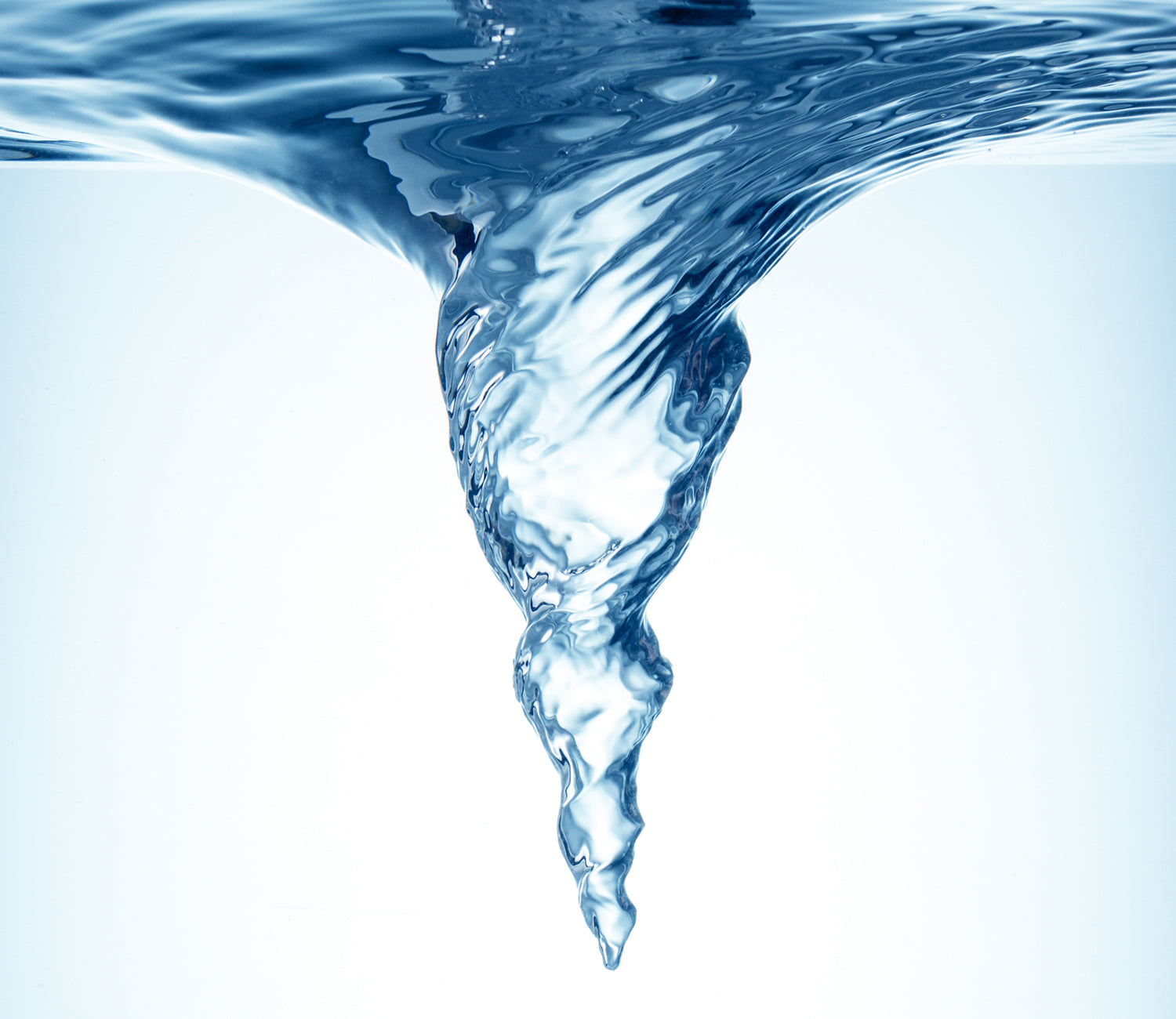In nature, we usually look for drinking water in springs and streams...
Water in its natural form, whether found in oceans, streams, or rivers, is constantly in motion. Tap water, on the other hand, is often under pressure for hours and days and has no opportunity to move freely in treatment plants and water pipes. So-called water turbulence devices are intended to remedy this situation by mimicking or enabling the natural movement of water, thus allowing it to regain some of its natural structure.
Disclaimer: The "vitalization" of water encompasses theories that attempt to explain changes sometimes observed in water after physical manipulation. Such changes, such as a fresher taste, increased mobility, and higher efficiency in crystallization or germination tests, remain scientifically unexplained.
+ What is a water swirler?
+ How do water vortexers work?
+ Which water swirlers can I use myself?
+ How can classic water swirlers be installed?
+ Who benefits from water swirlers?
+ Treating filter water with a water swirler - what do I need to pay attention to?
What is a water swirler?
Swirling devices mimic the flow of water in nature or utilize physical effects to revitalize tap water, i.e., improve its structure on a subtle level. There are different types of water swirlers:
- Classical line-connected vortex devices in which the flow path is predetermined.
- High-speed swirlers, such as those from AquaNevo.
- Ultra-colloidal or levitation devices.
How do water swirlers work?
Classic water swirlers bring movement to tap water by mimicking the principle of vortex formation in natural waterways. The special currents in water vortices create shear forces at the nanometer level, as the water layers accelerate toward the inside.
This fascinating phenomenon leads to a natural dissolution and renewal of the water clusters. Naturally moving water is thus structurally renewed and "vitalized" "on its own." Water swirlers that utilize this natural process include the Martin and DENK swirlers.
High-speed swirlers have an additional effect: In a small vortex chamber, the water is accelerated to high speeds, generating kinetic energy and reducing the size of the droplets. This increases the internal surface area of the water, creating a kind of suction effect. The water gains solvency and natural vitality.
There is also a vortex process, also known as "Hacheney levitation" or "ultracolloidation." However, the vortex flow and its special effect on the internal structure of the water play no role here. Instead, the water is atomized extremely finely using a rotor driven by a powerful motor. This is intended to reduce the size of the water clusters and also ensures an enormously large internal surface area.
Which water wibles can I use myself?
The simplest products for implementing the swirling process at home are classic water swirlers or high-speed swirlers for kitchen faucets. At Wasserladen, we offer the original Martin swirler, 3Quellen devices, and the small Whirlator® attachments and inserts starting at €54.
Simple vortexers structure the water in the manner of a meandering mountain stream; high-speed vortexers also utilize the principles of a waterfall—similar to the ultra-colloidal process. Vortexers typically create a so-called vortex bell, in which the water can open up and increase its surface area, before then concentrating into a uniform stream of water. This process also introduces oxygen into the water.
How can classic water vortexers be installed?
Unlike ultra-colloidal devices, classic and high-speed swirlers are small attachments for your faucet or the line between the water filter and the tap. They can be mounted either on the kitchen faucet, the tap of the water filter, or in the cold water or filtered water line under the sink. Tap attachments can be screwed onto all standard faucets and combined with suitable countertop or built-in filters (activated carbon or reverse osmosis systems) – for revitalized, virtually pollutant-free water.
High-speed swirlers are also easy to install, but due to their special design and workmanship, they are a bit more expensive. The various AquaNevo swirlers are available as attachments and inserts, which you can choose to match the water flow or flow rate of the filter insert. You can also choose the PI swirl egg for €138.
Ultra-colloidal water may have popularized the term "levitated water" through extensive press and advertising, but it's not particularly suitable for home use. The devices are quite large and expensive. Production takes several minutes and is very loud and energy-intensive. We have therefore not offered such devices for some time. Anyone who still wants to try this kind of water will need to look for a delivery service for "levitated" or ultra-colloidal water, which are sometimes also called "water stations."
Who benefits from water swirlers?
Anyone who understands the principle of swirling knows that water moved in this way can't be worse than before, but it can certainly offer various subtle and structural advantages. Therefore, purchasing this product is worthwhile for everyone: Users report nothing but positive things about swirled water: fresher taste, better dissolving power, and much more.
Water swirlers are available in a wide variety of designs: H2O Wasserladen, for example, offers the Martin swirler or high-speed swirlers from the AquaNevo series.
Revitalized water can be easily produced at home without any special tools due to the simple assembly.
Treating filtered water with water swirlers – what do I need to pay attention to?
To benefit from revitalized water in the future without additional electricity consumption, you simply need to consider the water flow or flow rate of your filter cartridge. This means the filter should produce a sufficient amount of water to allow natural turbulence to occur. Depending on the device, the lower limit is approximately 3-6 liters per minute.
H2O Wasserladen will be happy to advise you on any questions regarding the compatibility of a water swirler insert with a filter system.





